Happy Valentine’s Day!
Lily & Madeleine
 Sisterly harmonies have long been a part of pop music, from the big band sounds of the Andrews Sisters to Heart’s Ann and Nancy Wilson; but recent years have seen a boom of musical sister acts, including such hit makers as Haim, Tegan & Sara, and First Aid Kit. Teenaged sisters Lily & Madeleine are the latest additions to this elite club. Think of them as the new Simon & Garfunkel to the Secret Sisters‘ Everly Brothers.
Sisterly harmonies have long been a part of pop music, from the big band sounds of the Andrews Sisters to Heart’s Ann and Nancy Wilson; but recent years have seen a boom of musical sister acts, including such hit makers as Haim, Tegan & Sara, and First Aid Kit. Teenaged sisters Lily & Madeleine are the latest additions to this elite club. Think of them as the new Simon & Garfunkel to the Secret Sisters‘ Everly Brothers.
Signed to Sufjan Stevens’ Asthmatic Kitty Records, the Indiana siblings sing sophisticated close harmonies over gentle, acoustic backing— but if that sounds boring, think again! Because these ladies are also gifted songwriters, and they imbue each tune with an original perspective. Highly expressive singing tints each song with a new mood, from the folky “Come to Me” to the wistful “Spirited Away”, which recalls summer days long past.
Although their influences are mainly folk artists like Simon & Garfunkel and their label owner Sufjan, the sisters still work in some surprises. The haunting “Disappearing Heart” could be a vintage Heart slow jam, while “Nothing But Time” bops along like the Innocence Mission. “Paradise” sounds like it comes from the heyday of K Records, recalling the Softies and the Crabs.
Combined with their introductory EP, The Weight of the Globe, the album is almost an embarassment of riches and talent. Strong songwriting, beautiful singing, and a highly enjoyable debut album—at ages 16 and 18, Lily & Madeleine are poised to take over the world.
Monday Mixtape: Women-Folk
It’s cold outside! Put the kettle on, grab a blanket, and get comfy with these cozy acoustic numbers. Artists include Vashti Bunyan, Linda Perhacs, Buffy Sainte-Marie, Judee Sill, and more!
Cover Girls: “Respect”
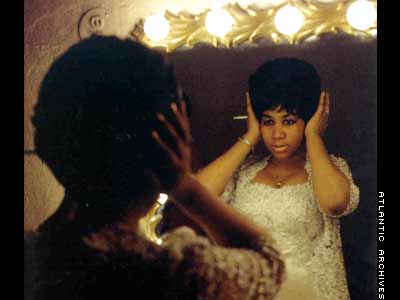 Otis Redding was a hard-working road dog of a soul singer, constantly touring in hopes that he would finally break through to the pop audience. A superstar in the R&B world, with many hits on the rhythm & blues charts, by 1965 he was beginning to get tired of it all. Complaining to a band member about their latest grueling tour, Otis was surprised when the drummer replied, “What are you griping about? You’re on the road all the time. All you can look for is a little respect when you come home.” Mulling over these words, Otis crafted a song about a man demanding this respect when he got home and recorded it, complete with his usual driving beat and the Stax horn section. He put the song on his acclaimed album Otis Blue and later released it as a single, where it reached the top 40 on the elusive pop chart. It was one of his biggest pop hits to date.
Otis Redding was a hard-working road dog of a soul singer, constantly touring in hopes that he would finally break through to the pop audience. A superstar in the R&B world, with many hits on the rhythm & blues charts, by 1965 he was beginning to get tired of it all. Complaining to a band member about their latest grueling tour, Otis was surprised when the drummer replied, “What are you griping about? You’re on the road all the time. All you can look for is a little respect when you come home.” Mulling over these words, Otis crafted a song about a man demanding this respect when he got home and recorded it, complete with his usual driving beat and the Stax horn section. He put the song on his acclaimed album Otis Blue and later released it as a single, where it reached the top 40 on the elusive pop chart. It was one of his biggest pop hits to date.
Two years later, another struggling R&B singer was looking for songs to record for her new album. It would be her first album with Atlantic records, a company who wanted to make her a mega-star. Aretha Franklin was already familiar with “Respect”, since it had been a huge R&B hit, but she and producer Jerry Wexler felt they could add something of their own to the tune. Changing the song’s arrangement, they allowed room for Aretha’s impressive vocals. Most importantly, they added a bridge to the song, with Aretha belting, “R-E-S-P-E-C-T, find out what it means to me”. Aretha’s sisters, Carolyn and Erma, sang backup and added the “Sock it to me” chant. Aretha’s version also includes a lyric about getting her “propers” when she gets home, an early usage of the term that eventually evolved into “props”. With just a few changes and Aretha’s commanding performance, the song became an anthem for civil rights and the feminist movement. It shot to number one on the pop charts, becoming Aretha’s signature song and biggest hit. Even Otis Redding was impressed with her recording, and joked while introducing the song at one of his own shows that “a friend of mine, this girl she just took this song.” Aretha would go on to have many more hits over the next several decades. Otis Redding died in a plane crash while on tour in December 1967, the same year Aretha’s version of “Respect” was a hit. Shortly after his death, he had his only pop number one with “Sittin’ on the Dock of the Bay”.
Monday Mixtape: Spooky
Here’s a Halloween mix to thrill you, chill you, and fulfill you…Listen if you dare! Artists include Florence + The Machine, Feist, Adele, and more!
The Hard Luck of Evie Sands
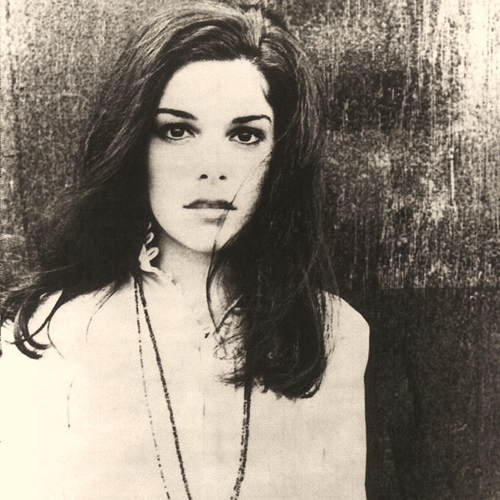 Teenaged Evie Sands learned early in her career that the music business could be cruel. After recording some singles in her mid-teens that failed to make the charts, she recorded a powerful song called “Take Me for a Little While” in 1965. Thrilled that she was about to have her first hit, Evie waited excitedly for the single’s release. Unbeknownst to her, a test copy of the record had been stolen from the studio by a producer, who sold it to a competing record label. They quickly recorded their own version of the song, featuring Jackie Ross, and released it before Evie’s recording could be shipped. The song worked its way into the charts, beating out Evie’s version when it was released a week later. Sadly, this incident would set the tone for Evie’s recording career.
Teenaged Evie Sands learned early in her career that the music business could be cruel. After recording some singles in her mid-teens that failed to make the charts, she recorded a powerful song called “Take Me for a Little While” in 1965. Thrilled that she was about to have her first hit, Evie waited excitedly for the single’s release. Unbeknownst to her, a test copy of the record had been stolen from the studio by a producer, who sold it to a competing record label. They quickly recorded their own version of the song, featuring Jackie Ross, and released it before Evie’s recording could be shipped. The song worked its way into the charts, beating out Evie’s version when it was released a week later. Sadly, this incident would set the tone for Evie’s recording career.
The Brooklyn-born Evie possessed a darkly beautiful voice that sounded far more mature than her age would attest. Her penchant for soulful material prompted an impressed Dusty Springfield to declare her “My favorite singer”. Despite her failure to chart, those in the know were sure that it was just a matter of time before Evie became a star. After the debacle of “Take Me for a Little While”, she released her next single, “I Can’t Let Go”, in 1966. This time it was the Hollies who would swoop in and score the hit.
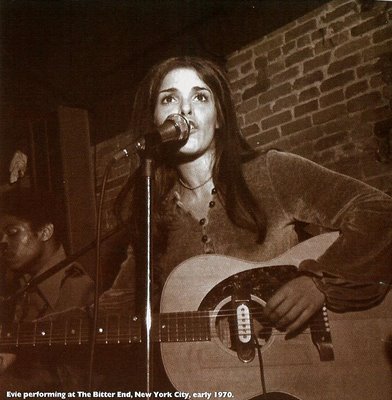 Deciding that a change of record labels might solve some of her problems, Evie signed with Cameo-Parkway the next year. She found and recorded the original version of “Angel of the Morning”, and the DJ copies sent to radio stations paid off as the record was widely played. The label pressed 10,000 copies of the single and shipped them to stores, where they quickly sold out. It looked as though Evie was about to score her hit, at last. Then Cameo-Parkway announced their bankruptcy, and no more copies of the single could be released. Interest in the song petered out, until a few months later when Merrilee Rush released her version of the song. It became a top five national hit.
Deciding that a change of record labels might solve some of her problems, Evie signed with Cameo-Parkway the next year. She found and recorded the original version of “Angel of the Morning”, and the DJ copies sent to radio stations paid off as the record was widely played. The label pressed 10,000 copies of the single and shipped them to stores, where they quickly sold out. It looked as though Evie was about to score her hit, at last. Then Cameo-Parkway announced their bankruptcy, and no more copies of the single could be released. Interest in the song petered out, until a few months later when Merrilee Rush released her version of the song. It became a top five national hit.
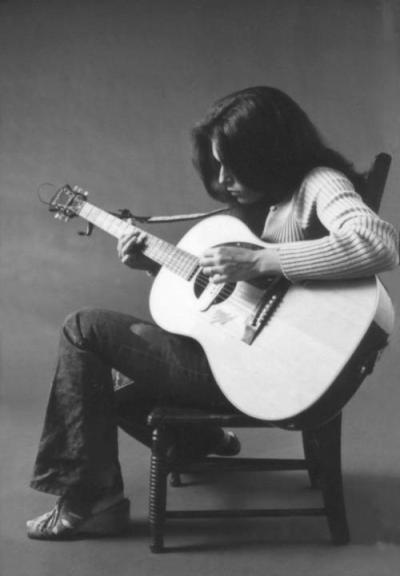 Devastated and without a record label, Evie began to explore writing songs and playing guitar. Her talent still made her an in-demand performer, and she appeared on the Johnny Cash Show. In 1969 Evie scored another record deal and began recording a batch of songs for a full-length album. “Any Way That You Want Me”, the first single released from these sessions, finally brought Evie to the charts. It eventually sold half a million copies. Momentum was building for Evie, but the delay of the album’s release caused it to miss the charts, despite the strength of each of its tracks. The album Any Way That You Want Me is something of a lost classic. Blue-eyed soul mixed with country and folk on songs like “But You Know I Love You” and “One Fine Summer Morning”. The album saw the debut of one of Evie’s original compositions, “It’s This I Am”, a song that was later covered by both Beck and Beth Orton. She even re-recorded “Take Me for a Little While”, her first near-hit.
Devastated and without a record label, Evie began to explore writing songs and playing guitar. Her talent still made her an in-demand performer, and she appeared on the Johnny Cash Show. In 1969 Evie scored another record deal and began recording a batch of songs for a full-length album. “Any Way That You Want Me”, the first single released from these sessions, finally brought Evie to the charts. It eventually sold half a million copies. Momentum was building for Evie, but the delay of the album’s release caused it to miss the charts, despite the strength of each of its tracks. The album Any Way That You Want Me is something of a lost classic. Blue-eyed soul mixed with country and folk on songs like “But You Know I Love You” and “One Fine Summer Morning”. The album saw the debut of one of Evie’s original compositions, “It’s This I Am”, a song that was later covered by both Beck and Beth Orton. She even re-recorded “Take Me for a Little While”, her first near-hit.
After the release of Any Way That You Want Me, Evie began to focus on her writing. Her 1970s albums, Estate of Mind and Suspended Animation, had a singer-songwriter sound that blended more easily with popular music of the day. The 1990s saw a revival of interest in her work, leading her to record a bluesy album called Women in Prison in 1999. Superstardom eluded her, but she remains an icon to fans who have stumbled upon her early singles and her masterpiece debut album.
Sweet Inspiration: Rickie Lee Jones and Tom Waits
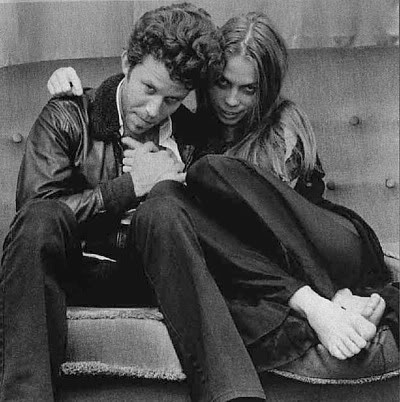 When Rickie Lee Jones met Tom Waits, they seemed to be a match made in heaven. They shared a love of beat poetry and jazz, and their songs were mired in the same cracked, ragged romanticism that colored their worldview. He was a struggling singer-songwriter with half a dozen albums under his belt, and she was an unknown performer who’d been invited to sing some of her songs at the famous Troubadour club in Los Angeles. Watching Rickie Lee perform that night in 1977, Tom was impressed by her good looks and talent, and the two became an item soon after.
When Rickie Lee Jones met Tom Waits, they seemed to be a match made in heaven. They shared a love of beat poetry and jazz, and their songs were mired in the same cracked, ragged romanticism that colored their worldview. He was a struggling singer-songwriter with half a dozen albums under his belt, and she was an unknown performer who’d been invited to sing some of her songs at the famous Troubadour club in Los Angeles. Watching Rickie Lee perform that night in 1977, Tom was impressed by her good looks and talent, and the two became an item soon after.
While they shared many common interests, they came from very different backgrounds. Tom was a middle-class kid who was slumming it by living in the notorious Tropicana Motel in Hollywood. In contrast, Rickie Lee was a former teenage runaway who waited tables to make ends meet, sleeping under the Hollywood sign when she couldn’t pay rent.
Along with their good friend Chuck E. Weiss, also a singer-songwriter, Rickie Lee and Tom were inseparable. When Tom released his 1978 album Blue Valentine, Rickie Lee and Chuck E. were included in the photos for the record’s cover. The album included a song called “Red Shoes by the Drugstore”, an evocative Yuletide story inspired by Rickie Lee.
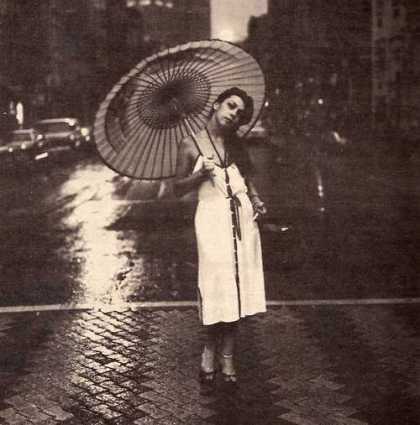 Shortly after the release of Blue Valentine, Rickie Lee began to attract the attention of record companies. Her song “Easy Money”, along with several others on a demo she’d been shopping around, earned her a record deal. The girl who was formerly known as “the mysterious blond” on Tom Waits’ album cover was about to become a star in her own right. When Rickie Lee’s self-titled debut was released in 1979, it was an immediate sensation. Filled with breezy songs like “Young Blood” and “Danny’s All-Star Joint”, mingled with gorgeous ballads such as “On Saturday Afternoons in 1963”, the album painted a vivid portrait of street life. Released to radio in a year that was dominated by disco and new wave, the jazzy single “Chuck E’s In Love” sounded like nothing else on the airwaves. The album, and it’s debut single, both reached the top five on Billboard charts. A performance on SNL and a Grammy for Best New Artist cemented her reputation as the fastest-rising star in rock. On tour, Rickie Lee was dynamic. Chuck E. remembered, “She could move people so quickly. At shows, I used to watch people in the audience just crying their eyes out when she sang.” The press also fell for her personal style, with her trademark berets, fingerless gloves, and vintage shoes. But while she made the cover of Rolling Stone, troubles were brewing. Her life of instability and poverty had left her unprepared for success, and she began to cope first with alcohol, then with harder drugs. Chuck E. recalled that her record label didn’t seem to care what Rickie Lee was doing to herself, as long as she kept touring and writing songs. Her relationship with Tom suffered. He was unable to deal with her success (her debut had outperformed all of his albums, many times over), as well as her drug problem. Sometime in late 1979, they broke up. Perhaps scared straight by watching Rickie Lee’s struggles, Tom moved to New York and sobered up.
Shortly after the release of Blue Valentine, Rickie Lee began to attract the attention of record companies. Her song “Easy Money”, along with several others on a demo she’d been shopping around, earned her a record deal. The girl who was formerly known as “the mysterious blond” on Tom Waits’ album cover was about to become a star in her own right. When Rickie Lee’s self-titled debut was released in 1979, it was an immediate sensation. Filled with breezy songs like “Young Blood” and “Danny’s All-Star Joint”, mingled with gorgeous ballads such as “On Saturday Afternoons in 1963”, the album painted a vivid portrait of street life. Released to radio in a year that was dominated by disco and new wave, the jazzy single “Chuck E’s In Love” sounded like nothing else on the airwaves. The album, and it’s debut single, both reached the top five on Billboard charts. A performance on SNL and a Grammy for Best New Artist cemented her reputation as the fastest-rising star in rock. On tour, Rickie Lee was dynamic. Chuck E. remembered, “She could move people so quickly. At shows, I used to watch people in the audience just crying their eyes out when she sang.” The press also fell for her personal style, with her trademark berets, fingerless gloves, and vintage shoes. But while she made the cover of Rolling Stone, troubles were brewing. Her life of instability and poverty had left her unprepared for success, and she began to cope first with alcohol, then with harder drugs. Chuck E. recalled that her record label didn’t seem to care what Rickie Lee was doing to herself, as long as she kept touring and writing songs. Her relationship with Tom suffered. He was unable to deal with her success (her debut had outperformed all of his albums, many times over), as well as her drug problem. Sometime in late 1979, they broke up. Perhaps scared straight by watching Rickie Lee’s struggles, Tom moved to New York and sobered up.
 Exhausted and heartbroken, Rickie Lee wrote songs and kicked her drug habit. In 1981, she released her masterwork. Pirates was a top five album; the world was glad to have Rickie Lee back again. Many of the songs on the album were inspired by her breakup with Tom. In a style that had evolved from the bebop of her first album to a sound that evoked early Bruce Springsteen, Rickie Lee laid herself bare. The epic “We Belong Together” hurls words at an imaginary Tom Waits:
Exhausted and heartbroken, Rickie Lee wrote songs and kicked her drug habit. In 1981, she released her masterwork. Pirates was a top five album; the world was glad to have Rickie Lee back again. Many of the songs on the album were inspired by her breakup with Tom. In a style that had evolved from the bebop of her first album to a sound that evoked early Bruce Springsteen, Rickie Lee laid herself bare. The epic “We Belong Together” hurls words at an imaginary Tom Waits:
I say this was no game of chicken
You were aiming at your best friend
That you wear like a switchblade on a chain around your neck
I think you picked this up in Mexico from your dad
Now it’s daddy on the booze
And Brando on the ice
Now it’s Dean in the doorway
With one more way he can’t play this scene twice
So you drug her down every drag of this forbidden fit of love
And you told her to stand tall when you kissed her
But that’s not where you were thinking…
How could a Natalie Wood not get sucked into a scene so custom tucked?
But now look who shows up
In the same place
In this case
I think it’s better
To face it
We belong together
“Lucky Guy” laments the ease with which Tom moved on, and “Livin’ It Up” regales the listener with stories of Rickie Lee, Tom, and Chuck E. But it’s the title track that contains the most explicit references to the relationship, with lines like “I’m holding on to your rainbow sleeves”; a sly nod to “Rainbow Sleeves”, the song written by Tom Waits that he gave Rickie Lee to perform. She went on to comfort him about his lack of commercial success: “You keep the shirt that I bought ya, and I know you’ll get the chance to make it/And nothing’s gonna stop you, you just reach right out and take it.” In the end, the album documents not only the end of a relationship, but the strength of a woman who had the courage to be so staggeringly honest; a woman who knew that her talent was worthy of the success she reached out to take.
Monday Mixtape: Girls and Guitars
If you think the Runaways were the first all-girl band, think again. These ladies of the 1960s were banging out tunes in their garages when rock n’ roll was exclusively a guy’s game. Have a listen to the sounds of She, the Luv’d Ones, the Girls, the Feminine Complex, the Daisy Chain, and many more!
The Impact of Linda Ronstadt
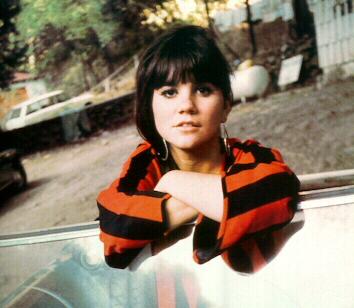 When Linda Ronstadt announced that her battle with Parkinson’s had left her unable to sing, the world mourned the loss of one of music’s greatest voices. By turns powerful and delicate, but always beautiful, Linda’s voice brought her phenomenal success in a career that stretches back almost fifty years. Critics and fans alike rightly lauded Linda’s ability to interpret a song, but few noted the impact she had on other musicians of the day, as well as today’s alt. country movement.
When Linda Ronstadt announced that her battle with Parkinson’s had left her unable to sing, the world mourned the loss of one of music’s greatest voices. By turns powerful and delicate, but always beautiful, Linda’s voice brought her phenomenal success in a career that stretches back almost fifty years. Critics and fans alike rightly lauded Linda’s ability to interpret a song, but few noted the impact she had on other musicians of the day, as well as today’s alt. country movement.
When Linda left the folk-rock band the Stone Poneys and embarked on her solo career in 1969, she established herself as an interpreter of songs. Taking a cue from alt. country pioneer Gram Parsons, she recorded a mix of rock and country songs that set the tone for artists to come, including her friend Emmylou Harris. She covered Waylon Jennings, Neil Young, Jackson Browne, Dusty Springfield, and Carole King with equal love and respect. On top of the music, Linda’s innovative “country cool” image had an impact that can still be felt today, with artists such as Taylor Swift and Carrie Underwood as heirs apparent. Then, of course, there was the time Linda’s backing band decided to strike out on their own. They called themselves the Eagles and became one of the most successful bands of all time. Below are some examples of Linda’s early country-rock hybrid sound.
In this early music video, Linda performs her debut single “Baby You’ve Been on My Mind”, a Bob Dylan cover.
Johnny Cash introduced Linda the solo artist to the world on his show in 1969. She performs Waylon Jennings’ “Only Mama That’ll Walk the Line”, then duets with Johnny on the folk standard “I Never Will Marry”, to a rapturous audience.
Linda returned to the Johnny Cash Show the next year to perform “Will You Love Me Tomorrow”.
Linda appeared on the Glen Campbell show to perform her first big hit, “Long Long Time”. She also duetted with Glen on James Taylor’s “Carolina in my Mind”.
Linda appeared on Playboy After Dark to perform “Walkin’ Down the Line”….
…and “Living Like a Fool”.
Good Influences: The Dum Dum Girls
 Although they’re currently based in New York, the Dum Dum Girls make perfectly Californian pop with a punk edge. Comprised of members Dee Dee, Jules, Sandy, and Malia, the ladies have two albums and two EPs under their belts and a growing fan base. The fuzzed-out, lo-fi sound of their debut might have been traded in favor of more straightforward garage rock, but the strong tunes remain intact. Lead singer and songwriter Dee Dee Penny started the band as a bedroom solo project, then recruited other band members along the way. Hearkening back to the golden days of rock while retaining a fresh lyrical perspective, the Dum Dum Girls wear their influences on their sleeves.
Although they’re currently based in New York, the Dum Dum Girls make perfectly Californian pop with a punk edge. Comprised of members Dee Dee, Jules, Sandy, and Malia, the ladies have two albums and two EPs under their belts and a growing fan base. The fuzzed-out, lo-fi sound of their debut might have been traded in favor of more straightforward garage rock, but the strong tunes remain intact. Lead singer and songwriter Dee Dee Penny started the band as a bedroom solo project, then recruited other band members along the way. Hearkening back to the golden days of rock while retaining a fresh lyrical perspective, the Dum Dum Girls wear their influences on their sleeves.
With the lo-fi sound on their first album, the Dum Dum Girls were heavily influenced by indie artists like Talulah Gosh. Formed in England in 1988, Talulah Gosh ushered in the golden era of K Records and twee pop. The hazy sound and high energy of the genre won over fans like Kurt Cobain, while influencing many bands to come. After their breakup, the members of Talulah Gosh regrouped as Heavenly, and then once more as Tender Trap. The influence of each of these bands can be heard in the music of the Dum Dum Girls.
One of the most loved bands of the 1980s, The Pretenders were mainly a rotating group of backing musicians for lead singer and rock icon Chrissie Hynde. With her smoky voice and edgy look, Ohio-born Chrissie formed the Pretenders in England in 1978. A string of hit records followed, and the band remained at the top of the charts for more than 15 years. They continue to perform today. Dee Dee’s voice bears more than a passing resemblance to Chrissie’s, and the jangly guitar sound employed by the Pretenders has surfaced in many Dum Dum Girls songs.
Blending Hollywood Noir with British punk and a dash of Americana, X were one of the premier west coast bands in the 1980s. Exene Cervanka shared lead vocal duties with John Doe, and caused quite a stir with her multi-colored hair and ripped clothes. The Dum Dum Girls have mined similar west coast punk and surf styles to emerge with a sound similar to X’s.
Like every all-girl band, the Dum Dum Girls owe a debt of gratitude to the girl bands of the 1960s who paved the way for female musicians of the future. One such band was East Los Angeles’ The Girls, four sisters who had been playing music together all their lives. Rosemary, Diane, Sylvia and Margaret Sandoval recorded two singles (“My Baby” and “Chico’s Girl”), performed for troops in Vietnam, and earned a sponsorship from Fender guitars and amps. They also played at Bob Dylan’s birthday party in 1966. They still perform together as Not Your Average All Girl Band.